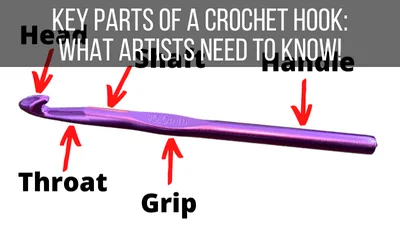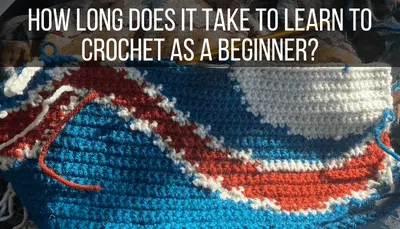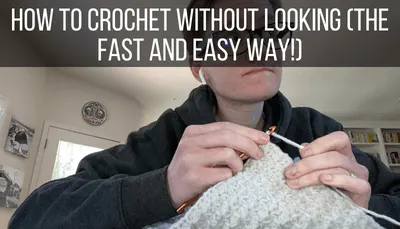There are beautiful blankets made with crochet. Blankets pierced together with granny squares; blankets made with fluffy yarn and airy stitches; blankets made with thick yarn and dense stitches – there are so many possibilities! But are crochet blankets warm? Can they be too warm?
Crochet blankets are warm because air works as a great insulator. Despite having holes, crochet blankets are able to trap warm air between you and the blanket. Different types of yarn and crochet stitches can be used to customize the thickness and amount of warmth a crochet blanket creates.
In order to understand why crochet are warm, we need to look more generally at how clothing, blankets, and other coverings work in general. We also need to look at how the body manages heat.
Convection is a fancy word to describe when we lose body heat because of air or water moving across our skin (source). Think of a windy day at the beach when you’re in nothing but shorts and a t-shirt. Basically, due to convection, our body heat is getting swept away with the wind.
Whenever we put on clothes, or use a blanket, we try to preserve our body heat and so that it’s not lost through convection as quickly (source).
This is because, when we’re able to preserve our body heat, air actually works as a good insulator (source).
Whenever we’re cold and put on a coat, or we’re snuggling on the couch and reaching for a blanket, we’re actually trying to make better use of our own body heat. The goal is to better preserve our body heat around us so that it doesn’t get lost to the wind and surrounding environment.
So, if the goal is to preserve body heat, how would a blanket with holes do a good job of that? How could a crochet blanket actually be warm? Wouldn’t all of those holes let out the body heat?
Not exactly.
Blankets with holes, like crochet blankets, trap air within their holes and create pockets of warm air. This warm air then travels through the yarn, making the blanket even warmer.
If you’ve ever used a crochet blanket, you’ve probably been surprised by how warm they can be. While the holes in the blanket seem like they would let heat escape, they actually play an important role in preserving heat.
Now that we’ve talked about how crochet blankets keep us warm in general, let’s talk about one of my favorite things – customizing your blankets for your needs.
What I love about crochet is that it’s a blank slate of creativity. You can choose your yarn, your gauge, your stitches, and your style. All of these factors can be chosen wisely to impact the warmth of your blanket.
If you want to use a warmer yarn, wool is a great choice. Wool is a warm yarn that’s also durable. Specifically, merino wool is a nice choice of wool, as it’s thinner and softer than regular wool, while still having a nice warmth (source).
Fleece, cashmere, alpaca, and other types of warm yarns can produce lovely and warm results when stitched into a crochet blanket.
Choosing a warm yarn for your blanket can play a big role in helping to create a blanket that warm air can effectively be preserved in.
Once you’ve chosen your yarn, it’s time to think about the gauge. The gauge of your crochet work describes how many crochet stitches are within a certain size of work.
For example, how many stitches and rows are within 4 inches of a crochet swatch? That’s your gauge.
Measuring gauge is very important when following patterns, because if the gauge of your own project doesn’t match the pattern’s, your project will end up as a different size. So, if you’re crocheting a blanket from a pattern, make sure to check the gauge and ensure that your sample swatch matches the gauge stated in the pattern.
If you’re not using a pattern, gauge still matters. Measuring your gauge ahead of time will make sure you have enough yarn for your crochet project.
Aside from having enough yarn, your gauge will determine how many stitches are in your project. The more stitches you have, the more dense your blanket will be.
The more dense your blanket is, the more yarn it will have. Ironically, the more holes it will have as well. These holes will be smaller, but there will be a greater number of them. This means you have more holes and yarn for your warm air to circulate in.
The yarn, crochet hook, and tension you use for your crochet project all impact your gauge and how dense your crochet project will end up. If you’re not winding up with the gauge you want, try adjusting one of those three things until you find the gauge you’re looking for.
Even the type of crochet hook you use can impact your gauge, so try switching between metal, plastic, and wood crochet hooks if you need to.
Lastly, the type of stitch you choose for your crochet blanket can play a big role in how warm it will be. There are stitches that are loose and create bigger holes.
The triple crochet stitch, for example, creates much bigger holes than a single crochet stitch.
There are also stitches that are tighter, especially when paired with a teacher yarn and a smaller crochet hook.
For example, I adore the trinity stitch. I used a luscious fleece yarn with a 5.5mm hook to create a dense swatch of trinity stitches. This project is SO warm given the combination of the stitches, yarn, and gauge I used.
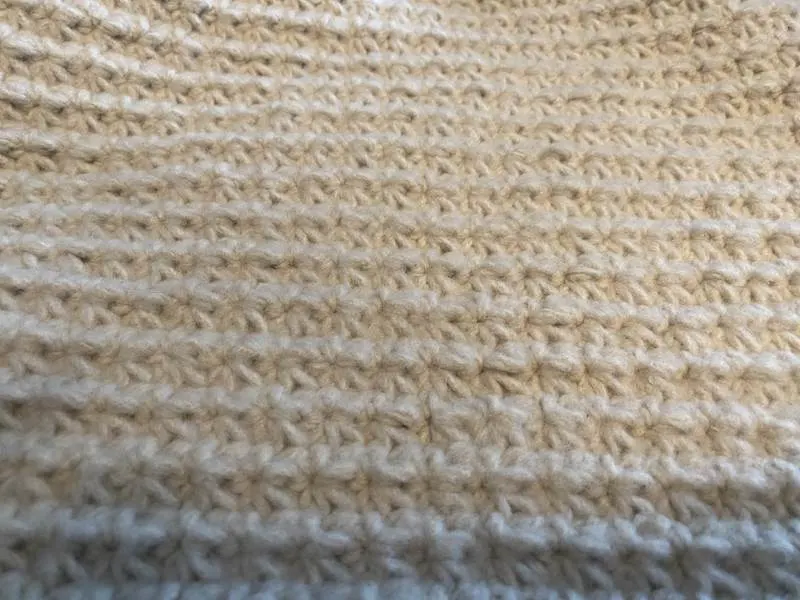
Making a crochet blanket is not only a fun process that leaves you with a beautiful result, it can also keep you cozy and warm! All of the holes within a crochet blanket that seem like they wouldn’t make for a warm blanket, actually do.
Embrace the holes in your crochet blanket and snuggle up to a warm and cozy experience. And, most importantly, have fun crocheting your blanket!
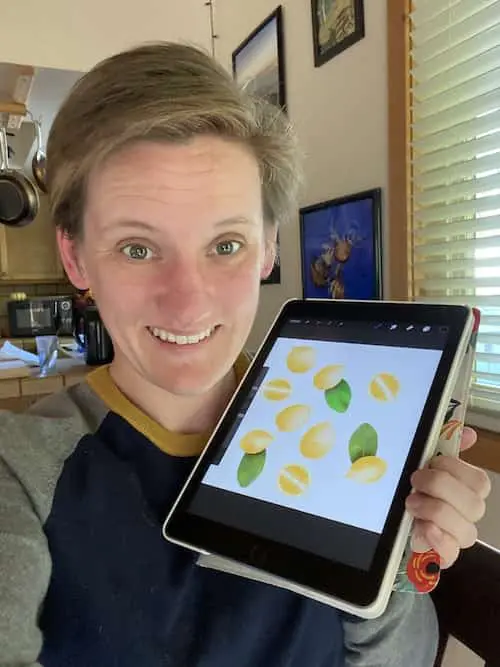
Diana has been an artist for over 27 years and has training in drawing, painting, digital drawing and graphic design. Diana’s latest obsession is digitally drawing with Procreate and Procreate Dreams. Diana has experience selling her art across a number of platforms and loves helping other artists learn how to make money from their art as well.

